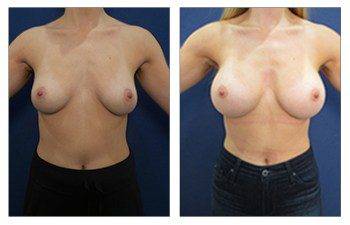
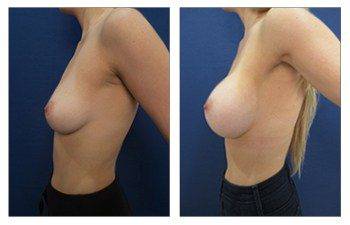
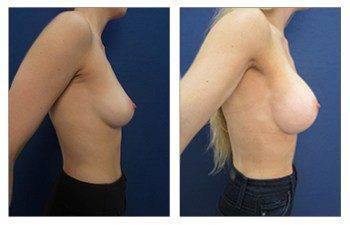
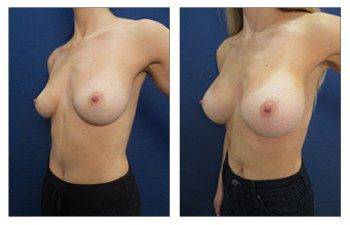
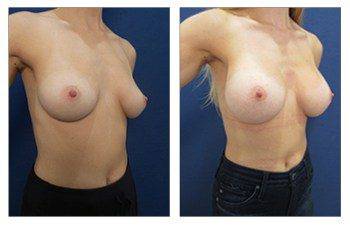
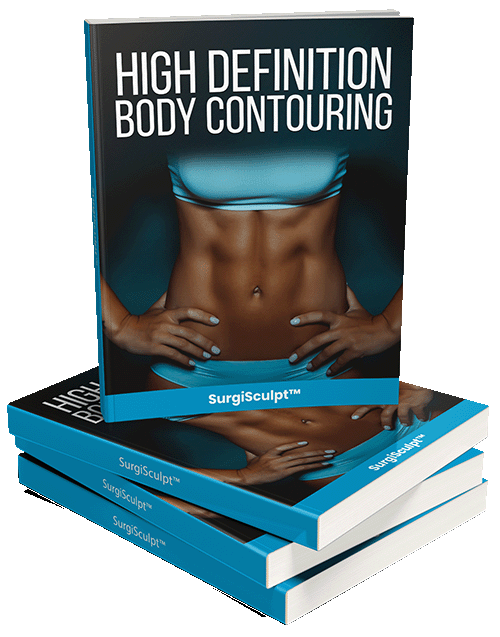
A study was done nationally that surveyed women who had a Breast Augmentation done and 3 principal questions were asked. The questions asked were (1) what is your overall satisfaction?, (2) how do your implants feel?, and (3) how do your implants look?. For two out of the three of those questions, women with silicone and saline implants tied for breast augmentation silicone vs saline.
Breast Augmentation Silicone vs Saline: Difference
Where did we saw a difference was in the question, How do your implants feel? where women who had silicone rated significantly higher numbers. It is no surprise that silicone implants ranked higher in how they feel, and tied on the overall satisfaction and the look of them.
We see patients routinely for Breast Augmentation procedures and the #1 concern women share is not knowing which implant to get, silicone or saline. What we like to discuss are the advantages and disadvantages of each, to help make your decision of silicone vs saline.
We will begin with Silicone implants. Silicone implants have a few advantages, including feeling more natural than saline implants. Silicone implants are widely known for feeling more natural or an implant. The second advantage of silicone implants is that if they rupture, you have time to get attention.
No immediate medical attention is required for ruptured silicone implants because with silicone implants, the shape is preserved. The jelly of the implants remains in the capsule, so you have time to have them redone.
A disadvantage of silicone implants is that with time, silicone molecules will migrate through the implant shell at a molecular level, independent of gross rupture (implant rupture) through the shell, called bleeding. Eventually, silicone will bleed across the shell over time. Traditionally, time is decades for bleeding.
The positive of this disadvantage of bleeding is that the shell thickens, and capsule forms, around 2-4 weeks, which also prevents malpositioning. This is why we do not allow our patients to exercise their upper body, to not push out the implant from their ideal position.
This thickened shell slows down the bleeding process, and studies will tell of this assumption. A side effect of this bleeding or of physical rupture is that when the body sees silicone molecules, they are walled out with scar tissue as the body’s defense mechanism.
When silicone molecules ooze out or rupture, the body reads these as new molecules and more spackling of scar tissue occurs, thickening the capsule. This thickening can lead to capsular contracture, leading to breast firmness and potential breast deformity.
With this disadvantage, it is noted that silicone implants do eventually need maintenance. Published rates of implant redos are 10-20 years, which stems specifically from silicone molecules oozing out, causing capsular contracture, or from the natural aging process, resulting in breasts sagging (from age or breastfeeding).
The incidence of breast augmentation revisions is higher in silicone in particular, due to the silicone oozing out, making it sticky, leading to breast tissue sliding off the implant and creating a snoopy deformity. The snoopy deformity is when the breast tissue falls and looks like the nose of snoopy.
Two other disadvantages of silicone implants are getting attention: Breast Implant Illness syndrome and the use of silicone textured implants. Patients are starting to complain about a gamut of symptoms extending from allergic reactions to chronic fatigue syndrome, breast pain, and joint pain.
The premise is that silicone molecules are being picked up by immune cells, which has not yet been proven but has been indicated leading to autoimmune diseases. It is noted that when implants are removed from the Breast Illness Implant patients, patients note improved symptoms.
The most recent issue, and very concerning, is the use of silicone textured implants. The use of silicone textured implants was first used to lower the incidence of capsular contracture, although Allergan has recalled their implants, calling for the removal and replacement with smooth silicone implants due to outcry of special rare lymphoma showing up in patients.
Now comparing silicone vs saline, we will discuss the advantages and disadvantages of saline implants.
As there are several, the advantages of saline implants include not needing to worry about capsular contracture. The saline implant falls down with the breast over time, instead of hardening in place. Over time, as the breast sags, the implant will sag at the same rate, resulting in a slightly lower breast mount, but no deformity.
It is often I see patients 30-40 years out from having their saline implants in, and they still have the same implants. Saline implants do not see the same deformities seen from silicone bleeding.
Saline implants also do not see Breast Implant Illness present as frequently as silicone implant patients. We still do see some due to the shell of the implant being silicone, but is still not as prevalent as can be seen with patients who choose silicone implants.
The larger noted disadvantage of saline implants is that the implant feels firmer than silicone implants. Saline implants are overfilled, as the rupture rate is higher than silicone. In order for the silicone to not rub on itself, it is overfilled, stenting the shell out and preventing so. Saline implants feel more tot, like a water balloon.
Another disadvantage is that when a saline implant pops or ruptures, you know immediately, never needing to question whether or not the implant is okay or not. To compare, for silicone implants, when they rupture, you do not necessarily need to know, as you have time.
Although, for silicone, to know if your implant is ruptured, you must rely on mammography. If you are aged >40 years old you have mammography annually, although if implants are placed in at a younger age, you will need to go out of your way to have mammography known and keep up with your silicone implant maintenance.
With saline implants, you know immediately if the implant has popped or ruptured, and that it is a good thing, but with that, the disadvantage is that you need to fix it immediately. With a saltwater filler, as is with saline implants, the saltwater is reabsorbed and the tissues in the breast can contract.
If not given immediate attention, within 1 month of pop or rupture, it will not be easy to stretch out the breast tissue again, not having the same leeway as with silicone implants.
Here is a 26-year-old female who demonstrates a bilateral breast augmentation with silicone implants.
